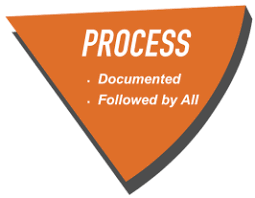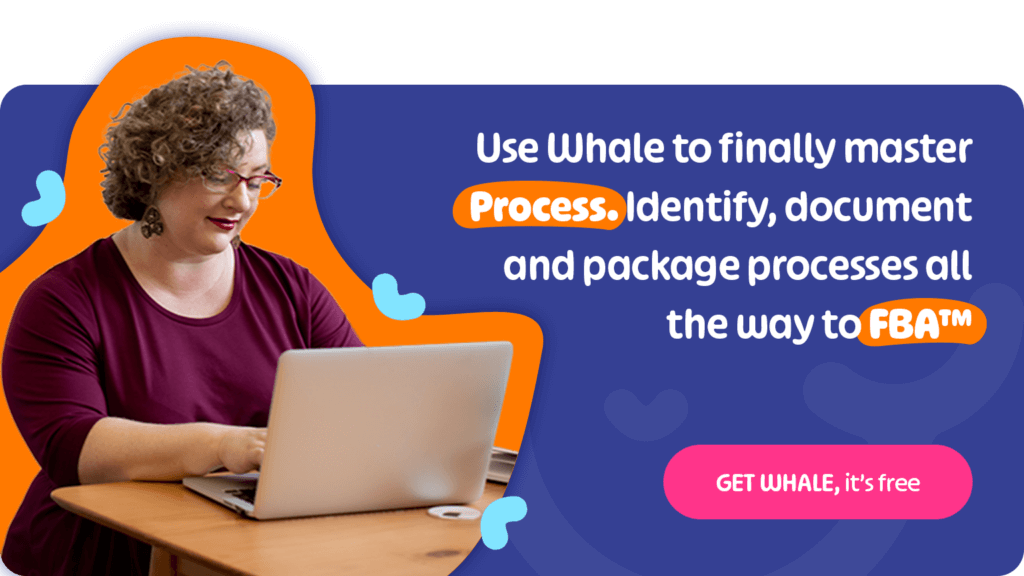Having problems with the Entrepreneurial Operating System®?
Are you having problems with the Entrepreneurial Operating System® Journey?
They can be divided into two parts. You’re either having problems;
- Implementing EOS or
- You’re having problems mastering EOS.
Let’s be honest. Making real change in your business is challenging. Super hard.
And not every step you take is going to have instant results but you can prevent a lot of growing pains with some simple solutions.
Let’s see how to get these challenges solved in no time at all!
Common challenges implementing EOS
Implementing a new approach to the way do business, often presents challenges. That’s because as humans we like to stick to what we know.
These are common challenges when implementing EOS;
- Resistance to change: Difficulty in getting team members to embrace a new way of operating.
- Alignment and buy-in: Ensuring all team members understand and commit to EOS principles and tools.
- Time and resource commitment: Allocating sufficient time and resources to learn and apply EOS effectively.
- Overcoming skepticism: Convincing team members of the value of EOS, especially if previous change initiatives have failed.
- Adapting EOS to company culture: Modifying aspects of EOS to fit with the existing company culture without diluting its effectiveness.
How to implement EOS like a rockstar?
Remember when we said we humans like to stick to what we know? It’s true. How often do you eat the same foods? Or go to the same places? Or simply start your day in the same way?
But for business leaders and entrepreneurs hungry to achieve more, understanding the importance of challenging these boundaries can make the difference between regression and success.
If you’re just getting started implementing EOS, we recommend adopting these approaches to help you overcome typical problems with EOS;
- Read the book Traction and get a copy for every person on your team!
- If you can afford it, get an EOS implementer to help you – it’s worth the investment
- Adopt change management
- Document your processes
Common problems mastering EOS
If you’ve been implementing any change for a substantial length of time and you’re getting nothing back in return, it’s time to step back, take a breath, and re-evaluate.
And companies that run on EOS are no exception.
Founder Gino Wickman created the Entrepreneurial Operating System® to help savvy entrepreneurs elevate their businesses, hit their targets, and scale their success through a set of tools and concepts.
But it’s still business. And you’re going to face some problems along the road.
There are a few common problems companies experience in their EOS journey. These often can be attributed to one or more of the 6 components of EOS that must be managed and strengthened to build a great business: Vision, People, Data, Issues, Process, and Traction.
And often they’re interlinked!
For example, process can often be used to solve Traction and People problems.
How to gain Traction®?
The Traction Component™ is all about putting the wheels in motion. Because no matter how well you plan or strategize — you’re never going to reach your business objectives without discipline, accountability, strong execution, and a way to ground your vision and make it real.
You need Traction. That’s a given. But if you’re working hard at it and still not getting the results you want, you’re probably not acing the Process Component™ — one of the most critical components for driving Traction.
How to use Process to solve common EOS problems?

The Process Component is all about identifying, documenting, and scaling the core processes that keep your organization on track to achieve its vision.
Because when you break it down, pretty much everything your business touches runs on some process.
And if you haven’t got the processes in place, then it’s no wonder you’re facing Entrepreneurial Operating System problems and not gaining the Traction or results you need.
But, don’t worry.
There are some simple, straightforward ways to solve your Entrepreneurial Operating System® problems with the help of some sharp processes.

3 Common problems in EOS
EOS problems refer to issues that arise during the ongoing application of the EOS model after its initial implementation phase.
These include;
- Inconsistency
- Lack of team alignment
- Inadequate issue solving
1. 🚩 Inconsistency
If you’re looking to accelerate growth, the obvious answer is to turn to a business operating system.
"Business Operating System: A business operating system gets everyone in the company on the same page, with the same vision, working toward the same goals."
– EOS Worldwide
But this requires one key ingredient: consistency!
Failing to consistently use EOS tools, like the Scorecard or Rocks, which can lead to a breakdown in communication and accountability. And failing to stick to meeting schedules consistently is going to result in a lack of traction.
⚙️ Solution
To get everyone consistently moving in the same direction, and operating on the same system, you’re going to need:
- An epic onboarding process: This is where Traction starts. When an employee joins your org, they should be taught what EOS is, how it works and how to rock it. And the way to make that happen is via a slick, simple, and scalable onboarding process. One that they won’t forget because it’s engaging, well-documented, and super accessible.
- An EOS refresher process: Don’t waste time finding out who’s chasing the wrong system. Instead, put a rigorous re-training process in place. Ensure the fundamentals are revisited at least annually. And make sure EOS is front and center of that schedule. If there’s a train on the wrong track, this process is sure to redirect them.
- To make sure everyone knows their role with the The Accountability Chart™ — remove subjectivity, emotions, or experience and instead ensure everyone knows how to play their part and how others contribute.
- To make EOS uptake part of your 1:1 review process with The People Analyzer™ — clearly identify if someone fits your culture and is filling the right seat. If they are, they’ll be EOS experts come review time.
💡Top tip
Work EOS into your routines with The Level 10 Meeting™, Rocks, and a Scorecard — create a process where you can meet regularly to solve issues, define and run through your main objectives, and rate your progress on them.
2. 🚩Your employees aren't aligned and on board

⚙️ Solution
When it comes to getting your ducks in a row (or your employees onboard with EOS), it all comes down to solid people processes:
Let’s face facts — not everyone will jump on board with a new business system but it won’t be out of spite.
If employees are holding up progress because they’re not quite there with EOS, there are likely three reasons for it:
- You have the wrong people in the wrong seats.
- Your top-down implementation needs some tweaks.
- Your communication could do with a bit of work.
And to solve those issues? You guessed it. You’re going to need some people-focused process.
Use process to;
- Get the right people in the right seats
Otherwise known as your recruitment process. Now this one’s a toughy. Recruiting the right people into the right roles can be easy if you start with the right process and criteria before you begin.
If you have people in the wrong seats, take corrective action in the form of conversations, training and a forward plan.
- Manage your Managers
If leaders aren’t using, supervising, and teaching EOS correctly, there’s little hope for anyone below them. Be sure to have firm, regular processes in place to train your managers on everything EOS — including advice on how to teach and monitor others utilizing it.
- Nail your Communications
Sometimes, the issue isn’t that your people are resistant to change and EOS, but that they’re confused because you haven’t communicated clearly.
Make sure you communicate why you’re implementing EOS and more importantly, how it will benefit the team.
💡Top Tip
Switching operating systems isn’t an overnight fix. Help your employees find their feet with Entrepreneurial Operating System® through:
- Books from The Traction Library such as Traction.
- Software from Bloom Growth.
- And a super slick platform to document, share, and scale processes.
- Use regular meetings, such as the Level 10 Meeting™ format, to foster communication, and make sure to address any questions or concerns promptly.
3. 🚩 Inadequate issue solving
Ineffective use of the IDS™ (Identify, Discuss, Solve) process, resulting in unresolved issues or surface-level solutions.
There’s no point solving the same time over and over again. If you can’t seem to get IDS right, it’s probably because;
- You or your team is afraid to speak up and highlight issues
- You don’t investigate deeply enough to solve the core issue
⚙️ Solution
There’s no point solving the same time over and over again. If you really want to resolve issues, make sure you utilize a process to do so.
Follow these guidelines;
- Make IDS a focus in your L10 Meetings
- Identify your list of issues
- Prioritize the top 3 issues
- Discuss and keep probing until you think you’ve reached the core problem
- Make a to-do that is linked to the issue and will resolve the issue
- Give feedback in the next meeting on the solution and how it’s worked. Ideally, the solve should show results in the scorecard in one way or another.
💡Top tip
Not everyone on the team will agree on a solution 100% of the time, and that is okay. If someone does not agree, as long as they can live with the solution, that is enough to move forward in the process.
FAQs about common EOS Challenges
How difficult is it to adapt to EOS?
It may feel strange to adopt to the EOS framework because it’s new, but it isn’t difficult.
Every company has its unique culture, and adapting EOS to fit within that culture, rather than against it, is a challenge.
Example: A non-profit organization struggled with the Implementer role, as their collaborative culture was at odds with the idea of a single individual driving the EOS process. It took time and adjustment for the organization to find a way to integrate the role that respected their egalitarian values.
Despite these challenges, companies that successfully implement EOS often report improved communication, greater clarity on roles and responsibilities, and a stronger alignment towards common goals.
Overcoming the initial adjustment period requires patience, commitment, and a willingness to adapt the system as needed to fit the unique needs of the business.
What are tips for a successful EOS roll out?
Based on EOS principles and common practices observed in successful implementations, here are key tips to ensure a smooth and effective EOS rollout:
1. Gain Full Leadership Buy-In
- Why It Matters: Leadership buy-in is crucial for the successful implementation and sustained use of EOS. When leaders are committed, it sets a powerful example for the rest of the organization.
- How to Do It: Involve all leaders in the EOS education process early on, ensuring they understand the value and principles of EOS fully.
2. Educate Your Team
- Why It Matters: Knowledge of EOS principles and tools across the organization fosters a cohesive approach to implementation.
- How to Do It: Utilize a tool like Whale to share all your organization’s knowledge on your EOS practices with your team members to ensure they understand how EOS works and their roles within it.
3. Set Realistic Expectations
- Why It Matters: Understanding that EOS implementation is a process, not an overnight fix, helps manage expectations and reduce frustration.
- How to Do It: Communicate that EOS will bring about significant positive changes over time and that patience and persistence are key.
4. Embrace Transparency
- Why It Matters: Transparency builds trust and accountability, essential components of the EOS model.
- How to Do It: Share goals, progress, and metrics openly within the organization to foster a culture of trust and openness.
5. Celebrate Milestones and Wins
- Why It Matters: Recognizing and celebrating progress reinforces the value of the EOS process and motivates continued effort.
- How to Do It: Acknowledge both big achievements and small wins in implementing EOS practices within your organization.
6. Commit to Continuous Improvement
- Why It Matters: EOS is a dynamic system that thrives on feedback and iterative improvement.
- How to Do It: Regularly review your EOS processes, seeking feedback from your team on what’s working and what could be improved, and adjust as needed.
Bottom line?
If you want to gain Traction with EOS, everyone needs to be moving in sync, and everyone needs to be following the right processes to get them there.
But to really get your employees on board with your core processes, you have to keep them simple, accessible, and engaging.
No sticking them in an Excel doc, never to be seen again. Instead, prioritize them with an all-in-one process platform your employees can actually get excited about.
And start seeing the Traction levels you and your boardroom can get excited about too. 🥳









